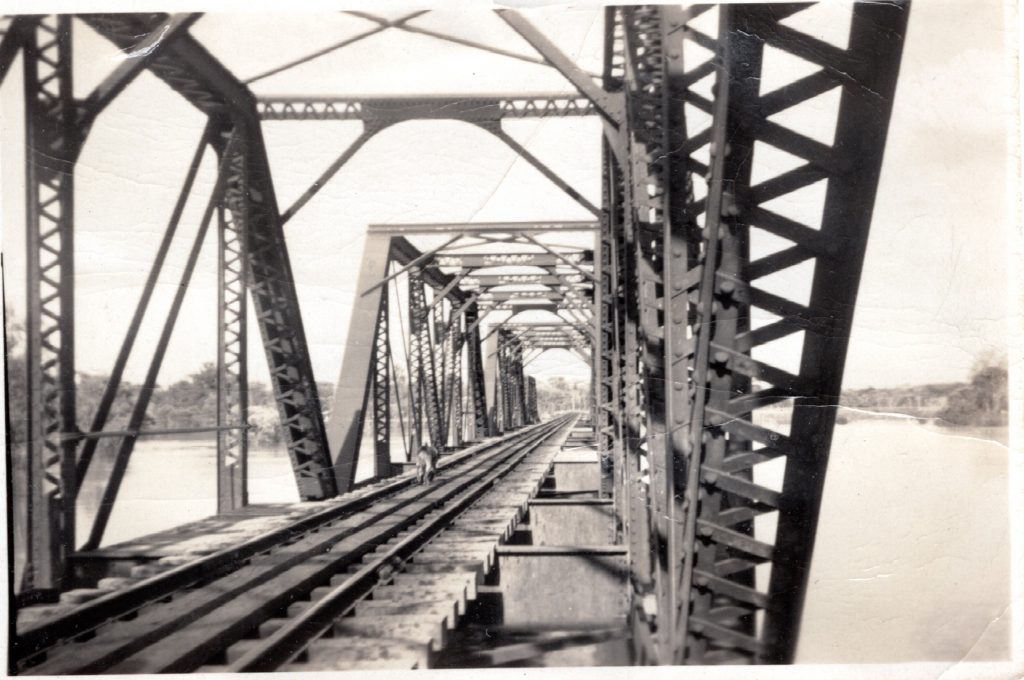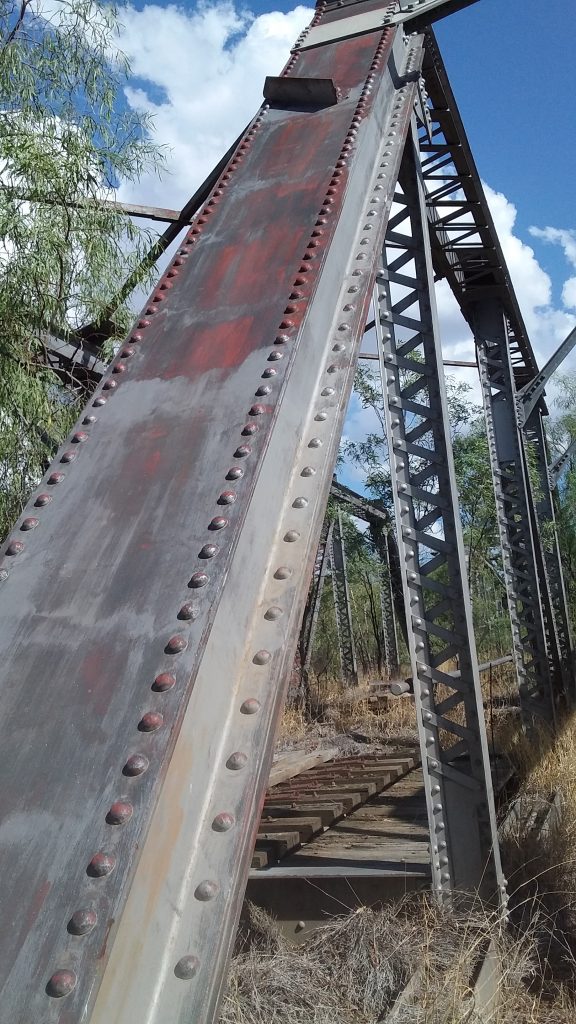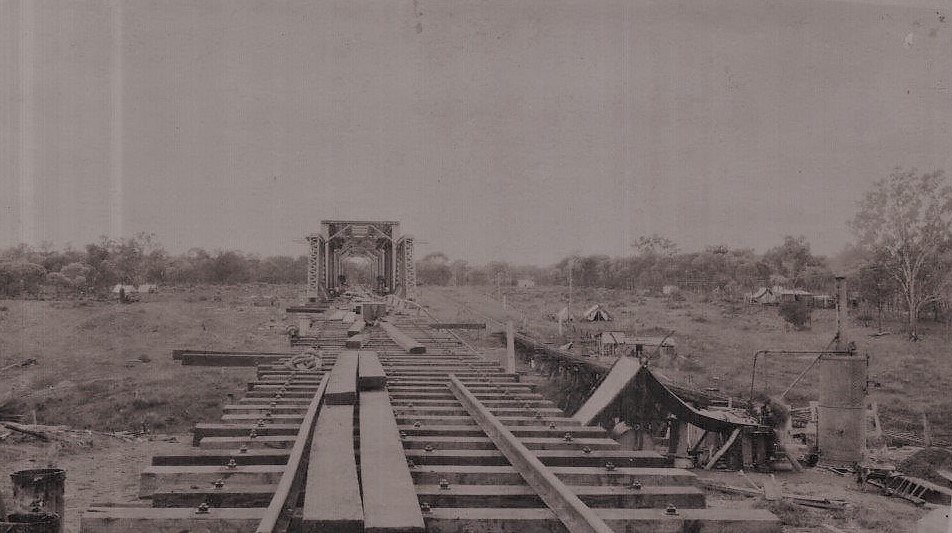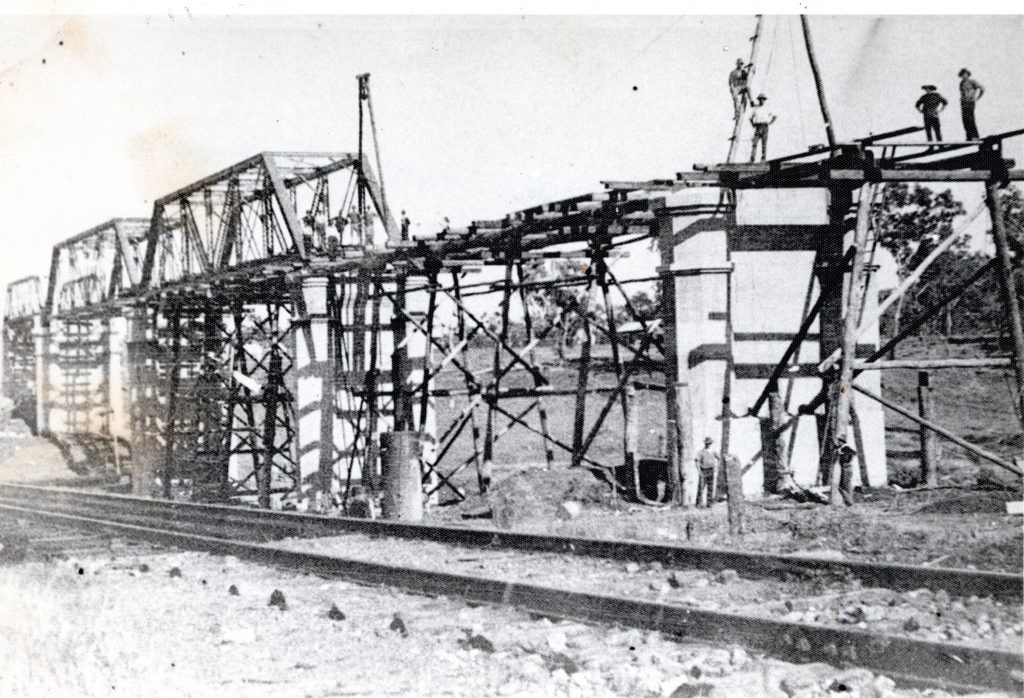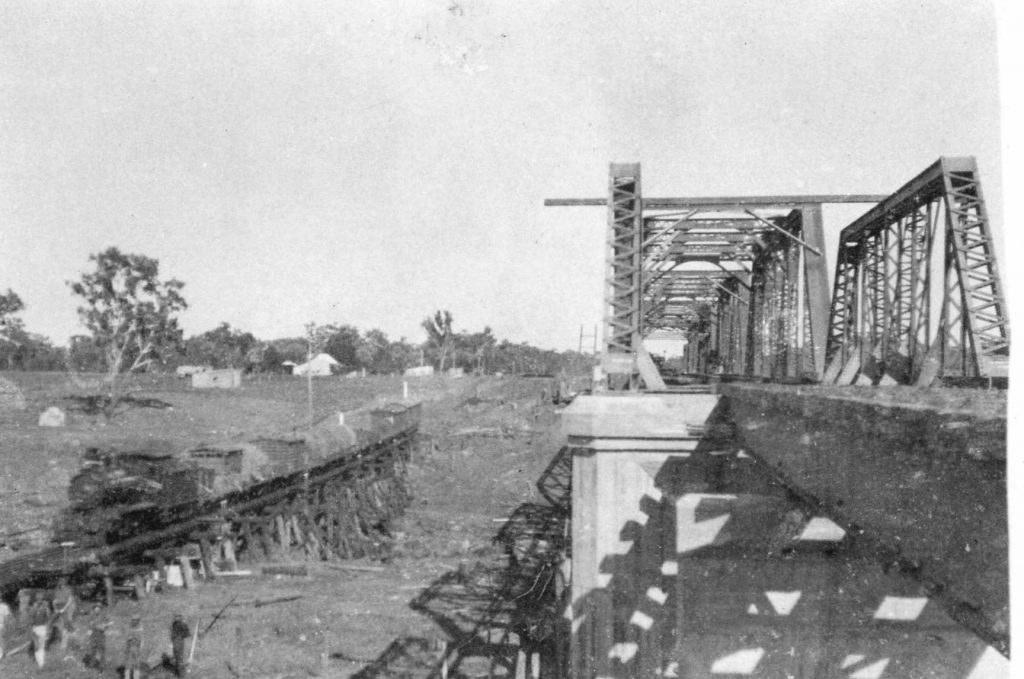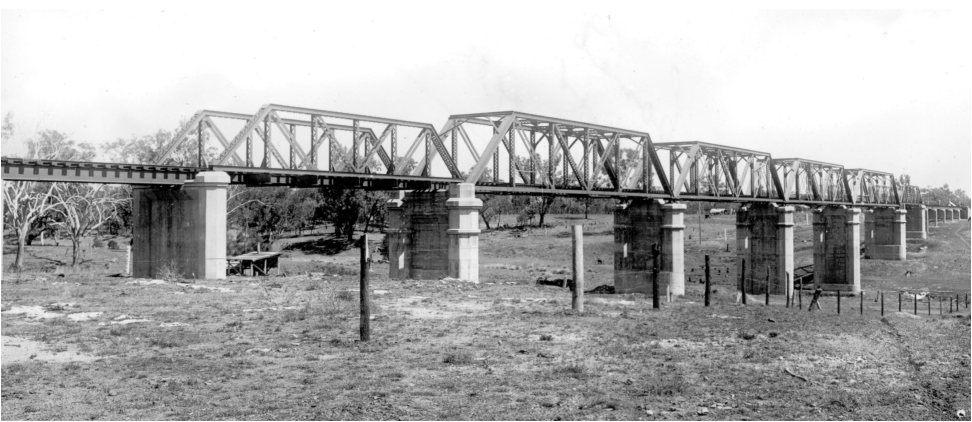Site 17

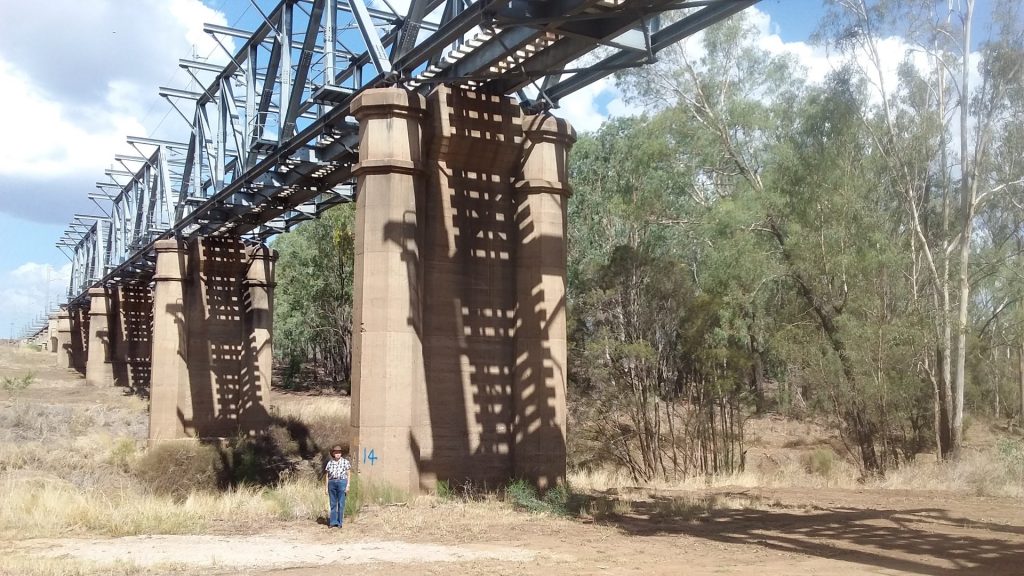
I’m Rosemary McLeod, and today I want to tell you about the remarkable steel Rail Bridge over the Comet River.
But before I do that, let me tell you a little about the Rockhampton to Longreach railway line.
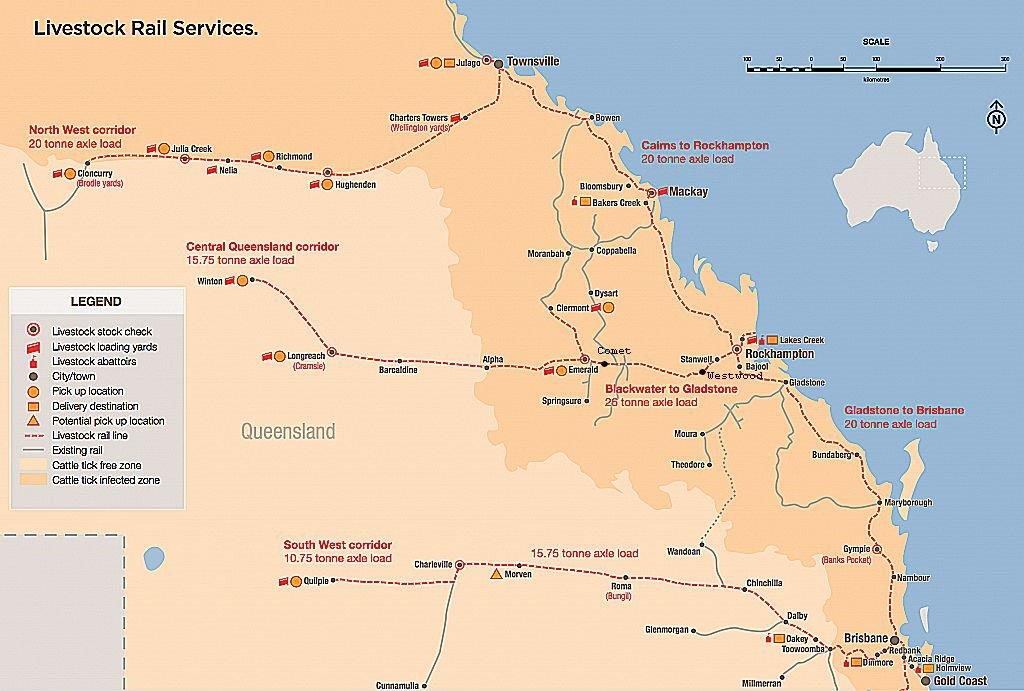
Now, the construction of this new railway line was given approval by the Queensland Government in 1864, with the first sod turned by the Queensland Governor, Sir George Ferguson Bowen, on the 28th September the following year.
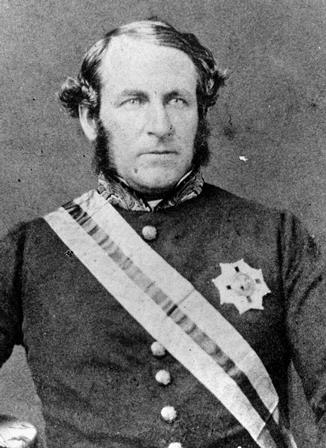
Henry Plews, who was the chief engineer of railways at this time and gave the new line the pretentious name of Great Northern Railway, even though it travelled through the centre of the state.
There were many delays in the construction of the rail line as far as Westwood, just 40km west of Rockhampton.
The first contract failed, due to lack of finance and the next contract for the construction went over budget.
However, work on the line finally reached Westwood in 1867, where it stagnated for the next six years due to the financial depression in the colony.
By 1872, the government was looking to extend the line to the west. The State’s economy had improved, possibly due to the fantastic strike on the Gympie goldfields.
So, Robert Ballard was engaged by the government to extend the line to the west as far as Longreach.
We know that he was very experienced in railroad construction, having built the very difficult railway line from the town of Ipswich up the exceedingly steep Range to Toowoomba.
Ballard planned to build the line as cheaply as possible by using local timbers in the construction, thus cutting costs.
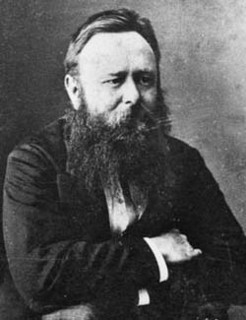
In January 1873, the work commenced on the continuation of the rail line to the west, which officially reached Cometville on the 1st March 1878.
While the work was being carried out here, tragedy struck in the form of five men tragically killed at Comet River overflow No 1, or Murdering Gully as it is known locally.
The work train was returning to town in the afternoon, when some of the men were swept off a wagon by a steel cable.
This cable had broken loose from a derrick at the work site on the bridge at Murdering Gully.
These injured men were taken to the government store in Cometville, where the railway doctor, Dr. McNeely, cared for them.
It was a sad day, and the whole town turned out for the burial of the men. After a solemn service the men were interred in the Comet cemetery.
Unfortunately, another man died on the train taking the injured to the hospital in Rockhampton, and he was buried in the Blackwater cemetery.
The rail line reached Emerald in 1879 and Longreach in 1892.
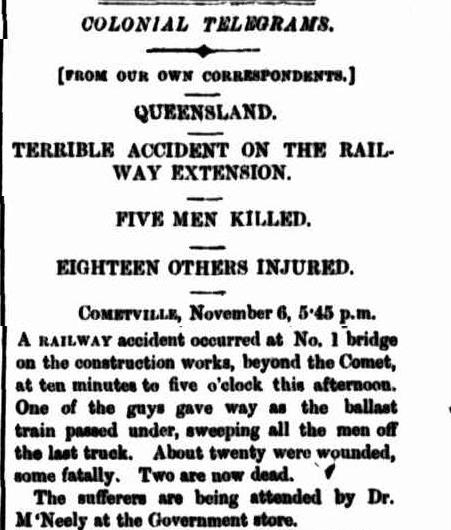
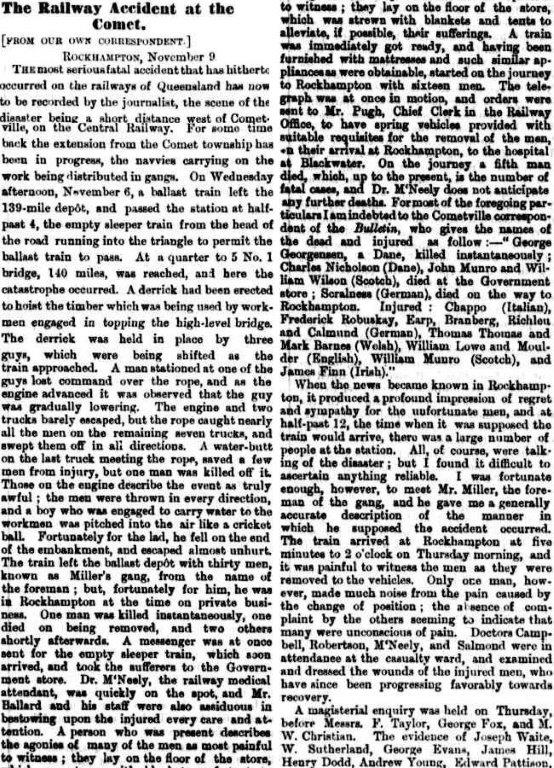
CAPRICORNIAN NEWSPAPER 6TH NOVEMBER 1878
Now, let’s get back to our subject of the steel rail bridge.
The bridge was designed in 1911, to replace Robert Ballard’s 1878 timber rail bridge over the Comet River.
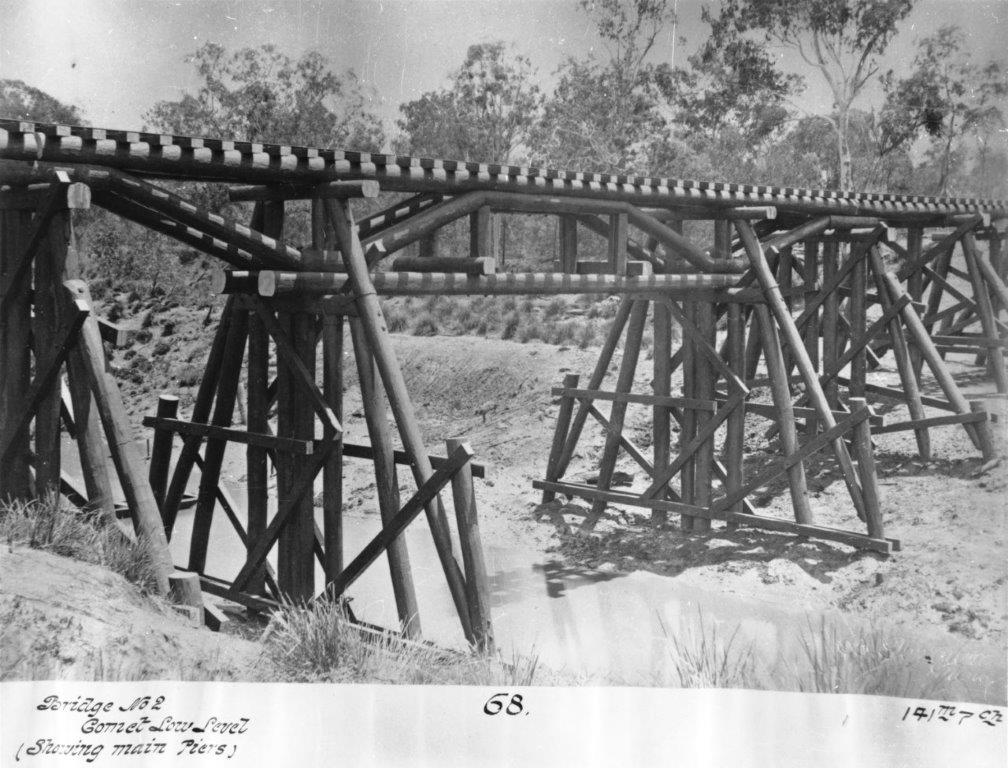
In the Brisbane Telegraph newspaper, dated Wednesday, 30th August, 1911, it was reported that “£10,000 pounds was allocated to the Comet River and Nogoa River high level rail bridges for analysis of requirements.” This was signed by W. H. Barnes, the State Treasurer.
It was further reported in the newspaper that February that year was very wet.
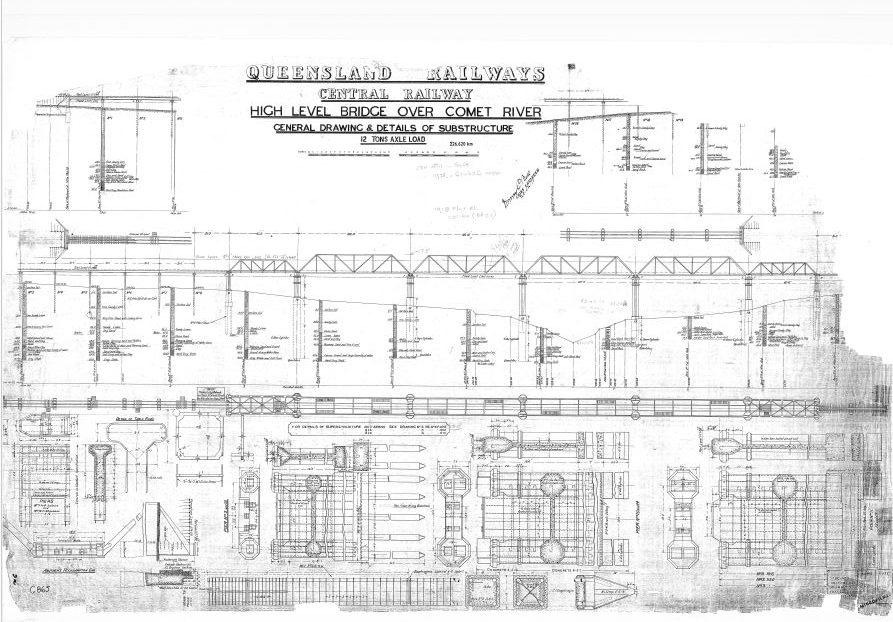
Now, the bridge took three years to build, and has a rail height of 19.22m above the stream bed. The cement for the massive piers was probably mixed with early type mechanical mixers with some of the materials being sourced locally.
The steel for this bridge was manufactured by the English firm of Dorman Long & Company Limited. This company were steel makers, constructional engineers and bridge builders and had built many famous bridges.
One of their finest achievements is the Sydney Harbour Bridge.
Most of the steel work on the Comet bridge was hot riveted together on-site by the workmen.
A red-hot rivet was driven through a drilled hole with a heavy hammer, then capped to clamp the rivet in place.
Just Looking at the photograph of the bridge; imagine how many rivets it would take to hold this massive bridge superstructure together.
When this bridge was built, it had a 12-ton axle load to carry the steam trains.
If you would like to see the plans for this bridge, go to the Whistle Stop Park Railway Station Museum in Comet.
During the construction of the bridge, the workers and their families were camped by the river on a black soil reserve near the bridge.
(Right) New steel bridge.
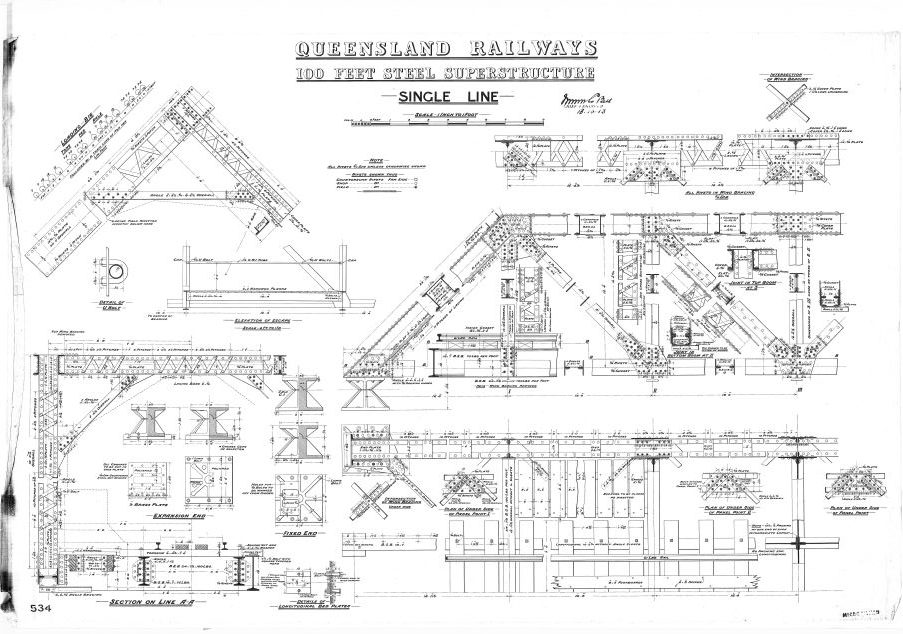
The all-important water for the job and the families was available from Ballard’s well, which was situated some 50m upstream of the steel rail bridge, and from a deep-water hole downstream from the road traffic bridge.
Ballard had sunk this well to water his steam locomotives back in 1878. This well was opened again during the terrible 1969 drought, by Mr Tom Dunbar to water his cattle and horses.
It would have been difficult for the families camped on the black soil during wet weather. Imagine trudging through the heavy mud as there were no footpaths and perhaps the dirt roads had also turned to mud.
Let me draw your attention to the photo of the piers under construction? These show the hessian bagging draped over the pier to keep the cement damp while it is curing.
And take note of the workers standing on the top of the pier, no hard hats or harness to keep them safe. Workers must have been a lot hardier, and more responsible for their actions in those days.
The bridge was completed in 1914 after some three years of hard work.
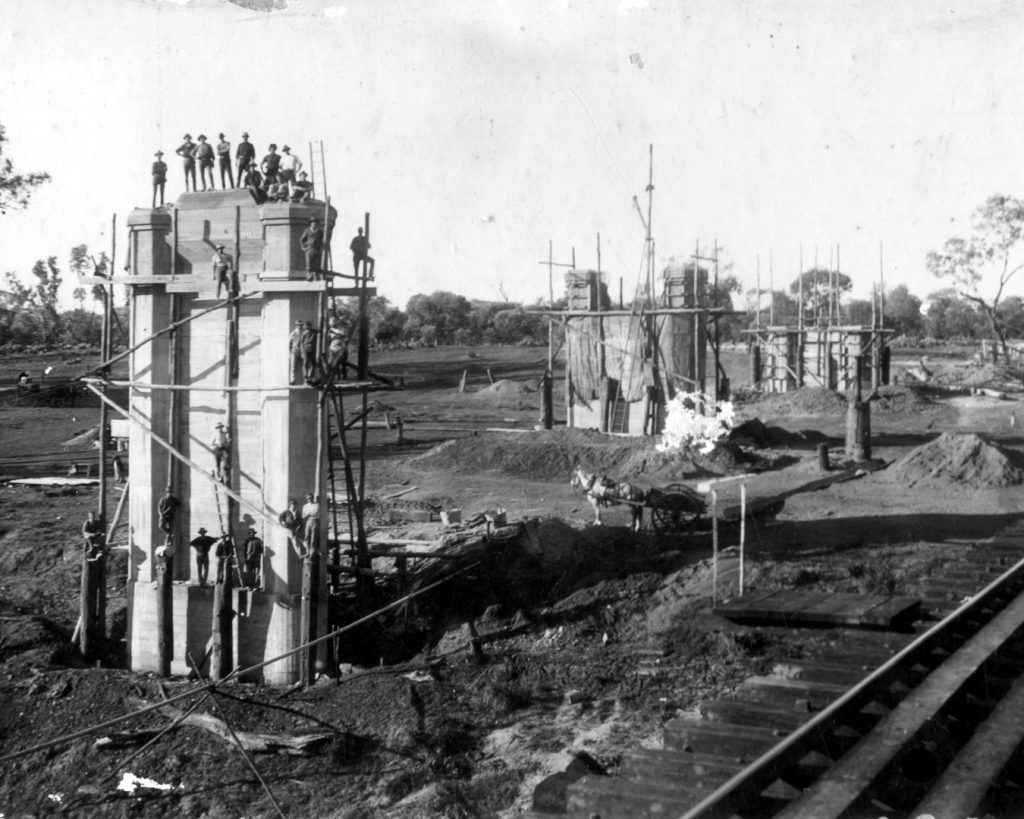
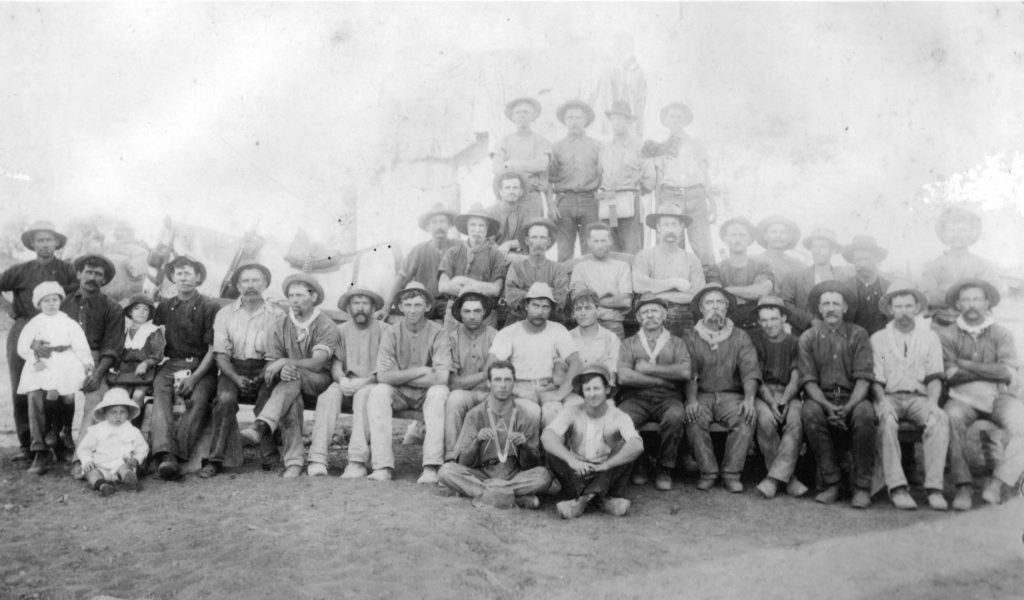
This bridge has seen several upgrades over the years. Greg Hallam, Queensland Railway Historian told me that, “It was slightly modified in the 1950’s, respacing the transoms to 20-inch centres”, that is 50cm.
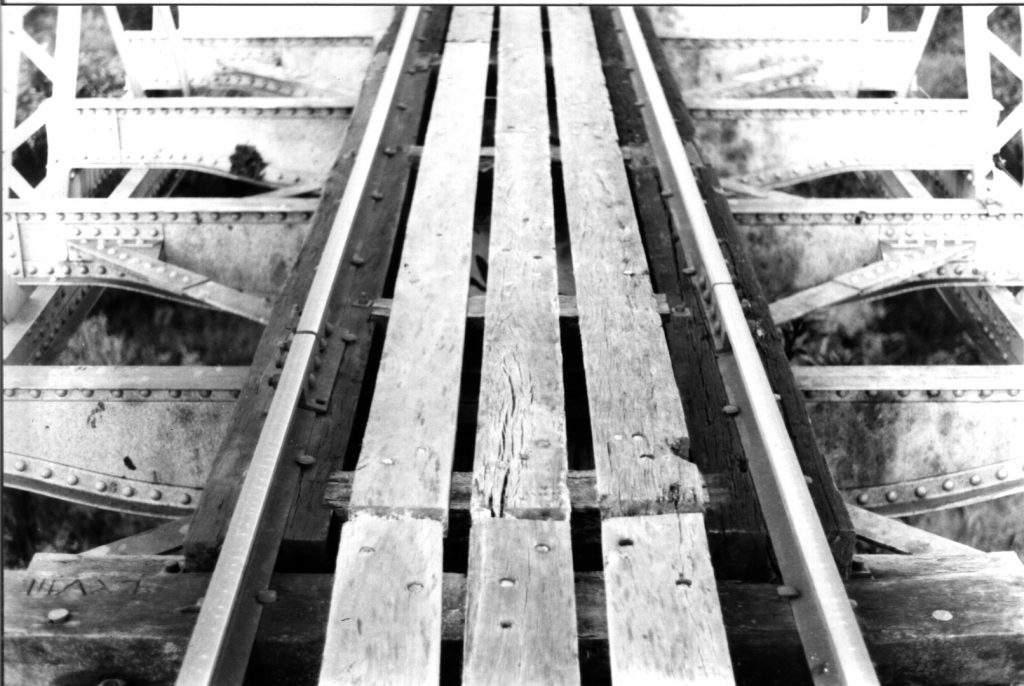
We know that later, substantial modifications were made for electrification, with the line now electrified as far as Emerald.
Greg Hallam also said that further modifications gave the bridge a 15.75 tonne axle load.
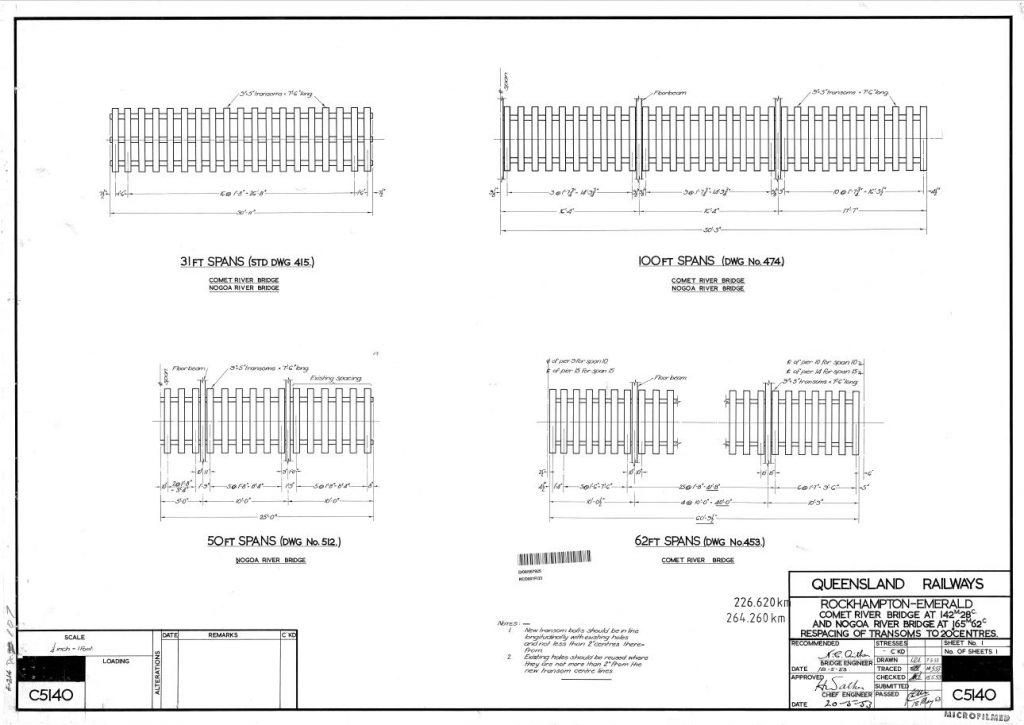
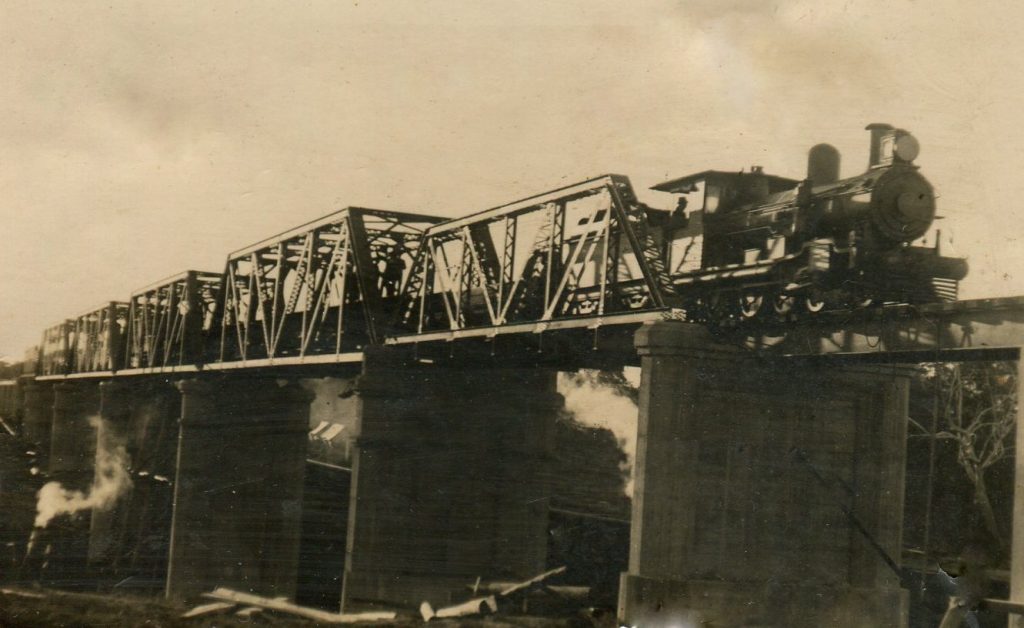
As the years roll on, the steam engines became heavier and able to pull greater loads.
In October 2005 six million dollars was spent to upgrade the Comet steel rail bridge.
The bridge, with its century old piers could now carry the heavy coal trains going to the shipping port of Gladstone from the Minerva Mine near Springsure.
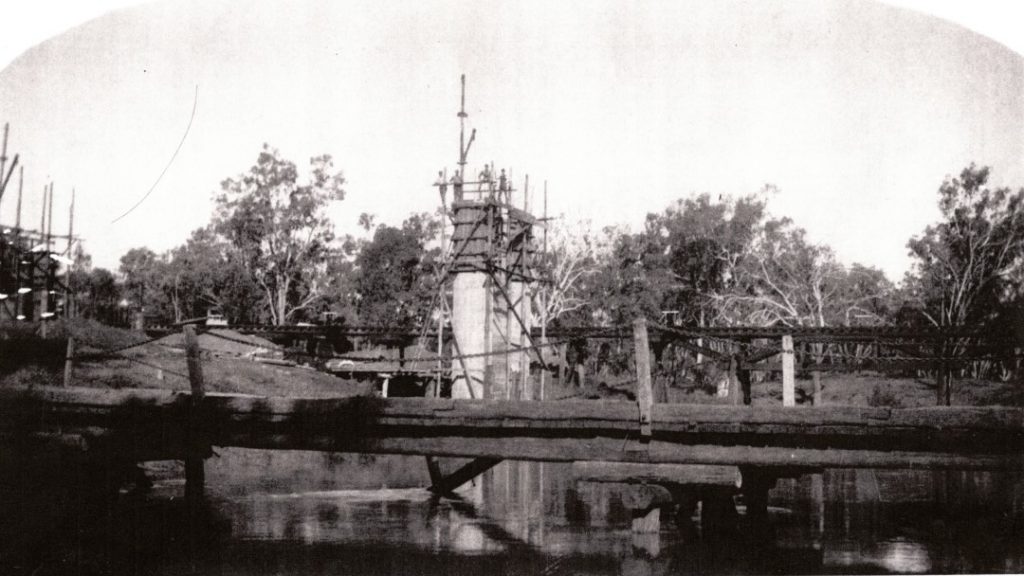
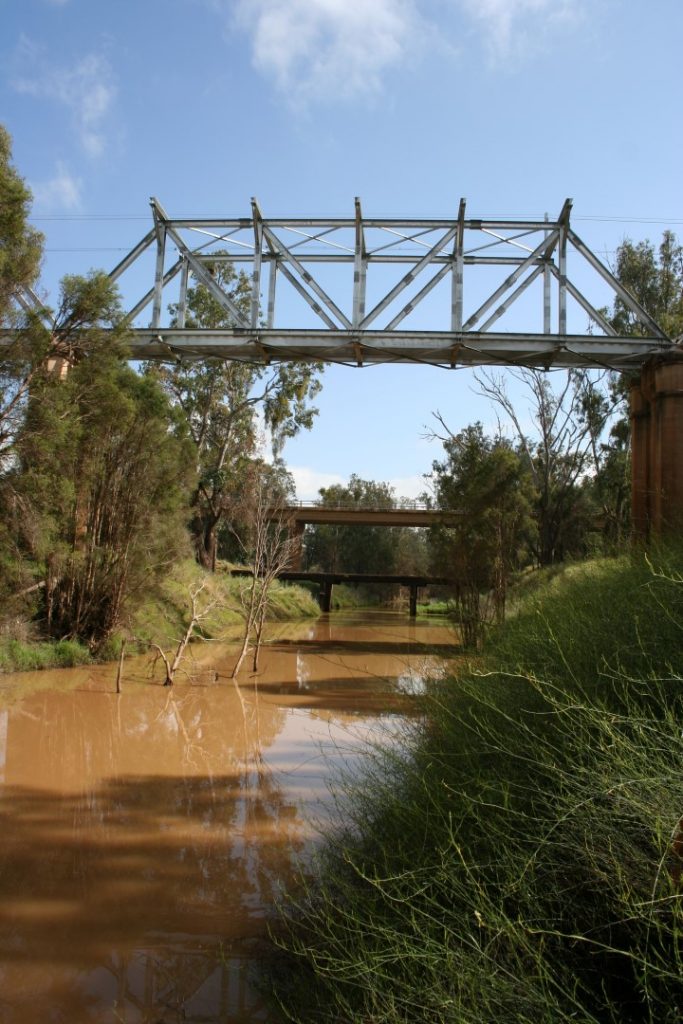
To prepare the site for the required work, soil was dumped into the riverbed to create a bridge for vehicles, to track backwards and forwards at the work site.
The train lines at either end of the bridge were cut and put aside and later re-joined after the new sleepers had been laid.
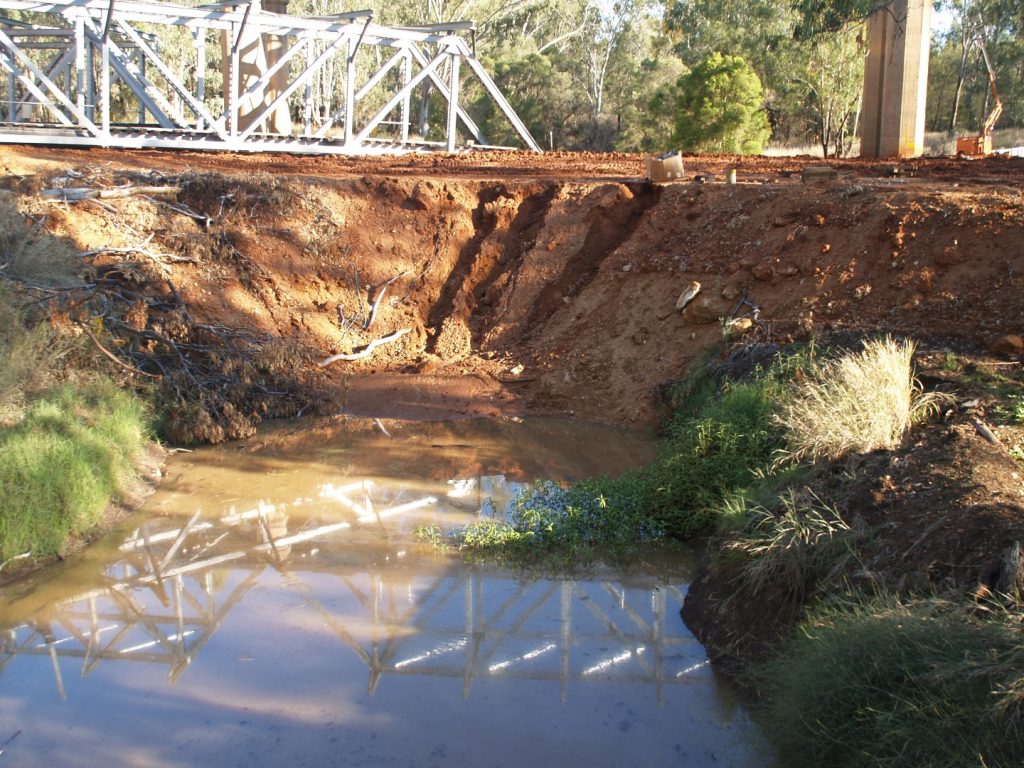
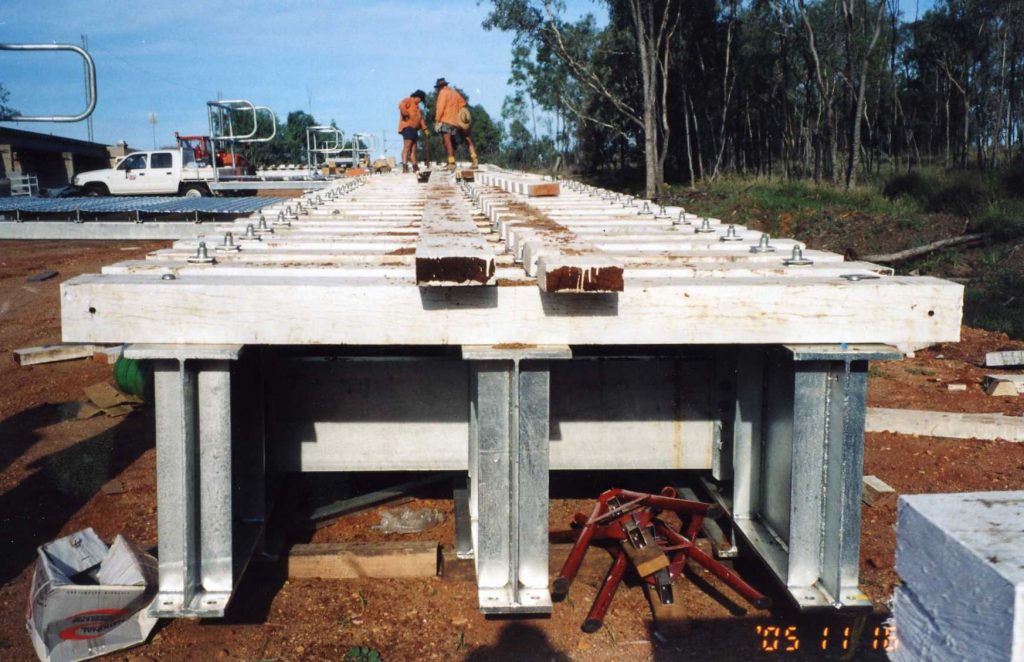
An interesting discovery was made at the commencement of the work. After the river was drained of water in the immediate area, the old footings of Robert Ballard’s 1878 timber rail bridge were exposed.
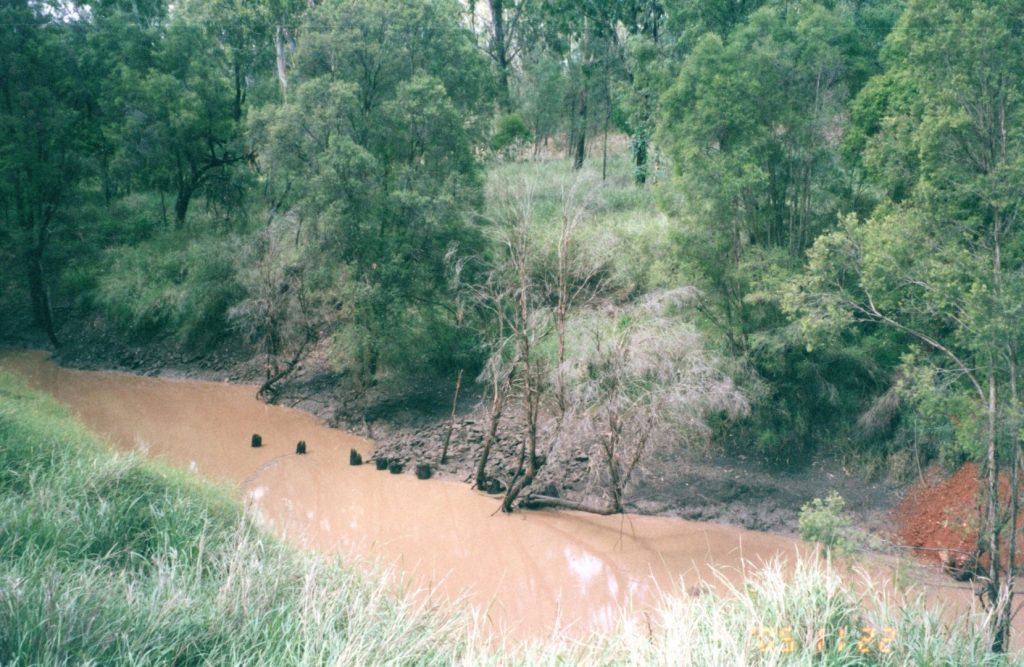
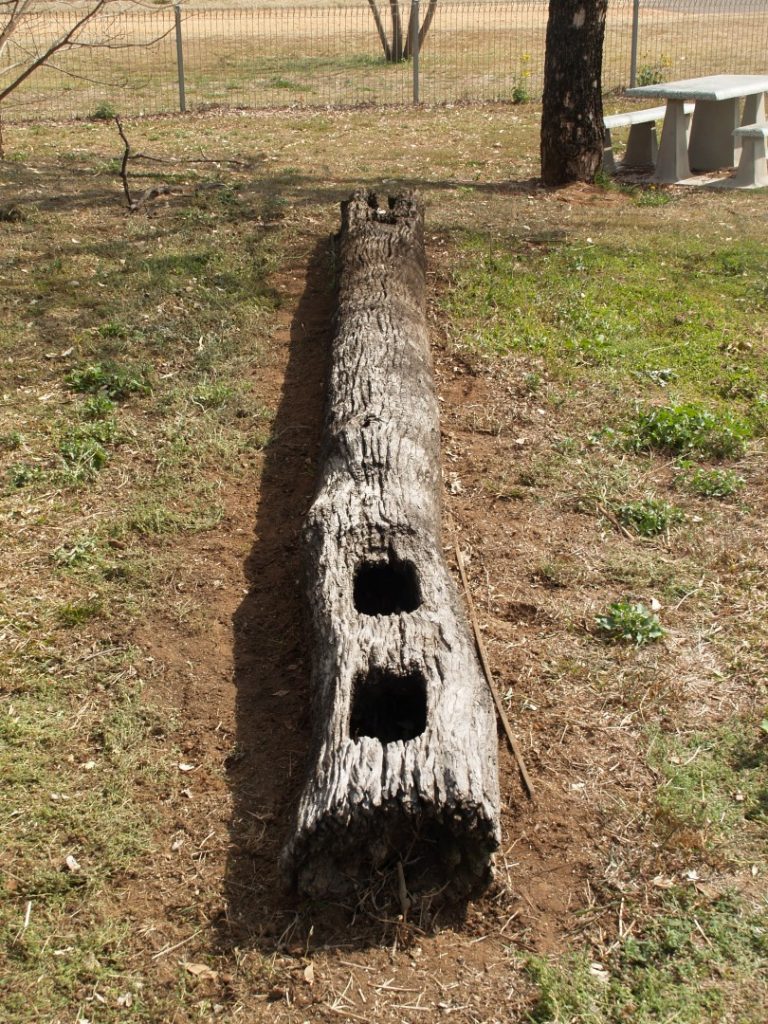
Workmen added concrete collars to the smaller piers below and above ground to increase their load bearing capacity.
The old superstructure was removed from the bridge, and a new structure was assembled on site. This was raised by huge cranes onto the bridge above.
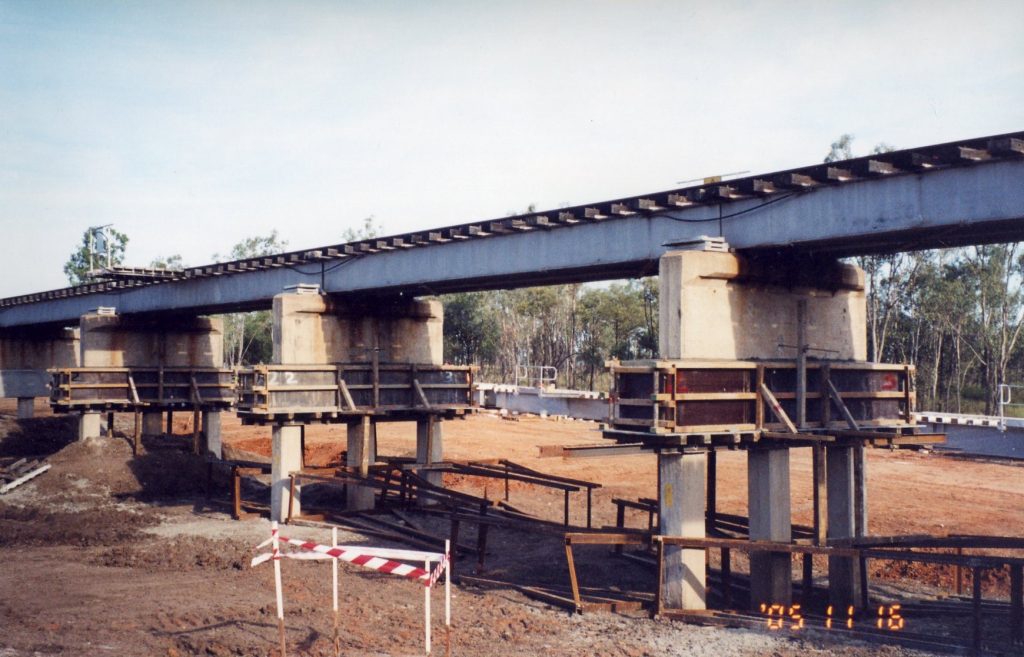
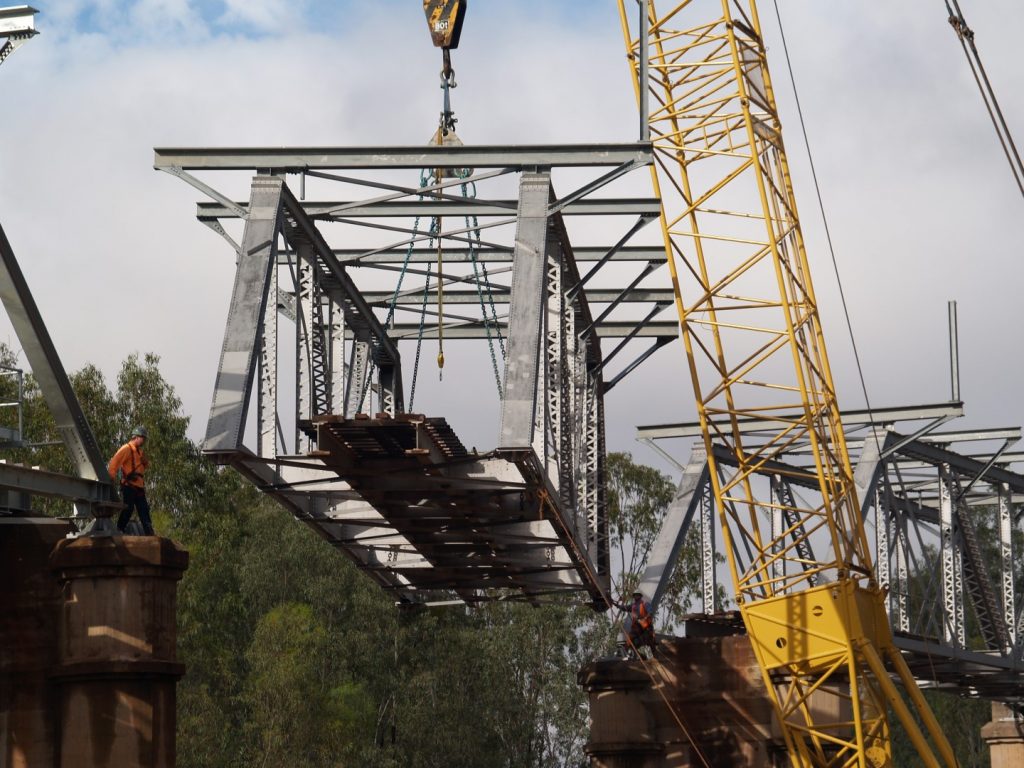
During this upgrade when cutting into the piers, the workmen found that glass beer bottles had been embedded in the concrete. They thought that the 1912 workmen had been drinking on the job.
However, it was revealed, that the bottles with the necks removed, had been used to create a void in the concrete.
A Lewis bolt was later grouted inside the bottle to secure the girders to the piers. Do you think that glass bottles would be used today?
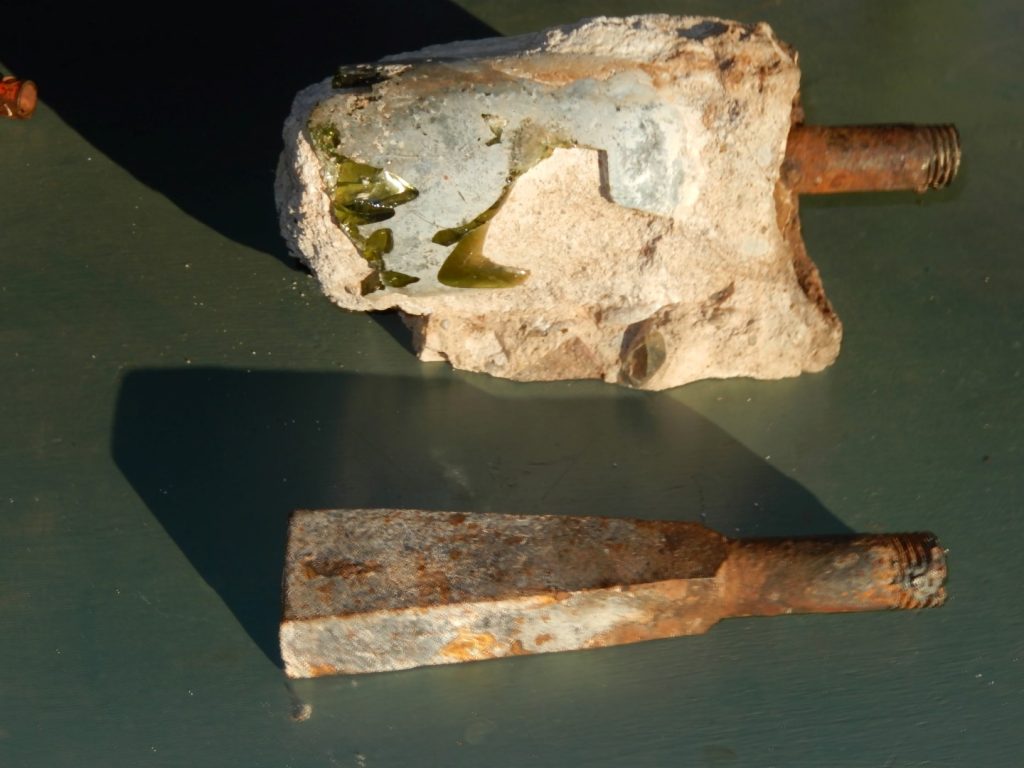
The work was done over two forty-eight-hour periods, when this section of the line was closed to rail traffic. On the first occasion it rained heavily and caused a great deal of inconvenience to the workmen.
The river flooded and the water washed away the soil embankment in the riverbed. This had to be replaced before the work could continue. The job was completed during the second forty-eight-hour closure.
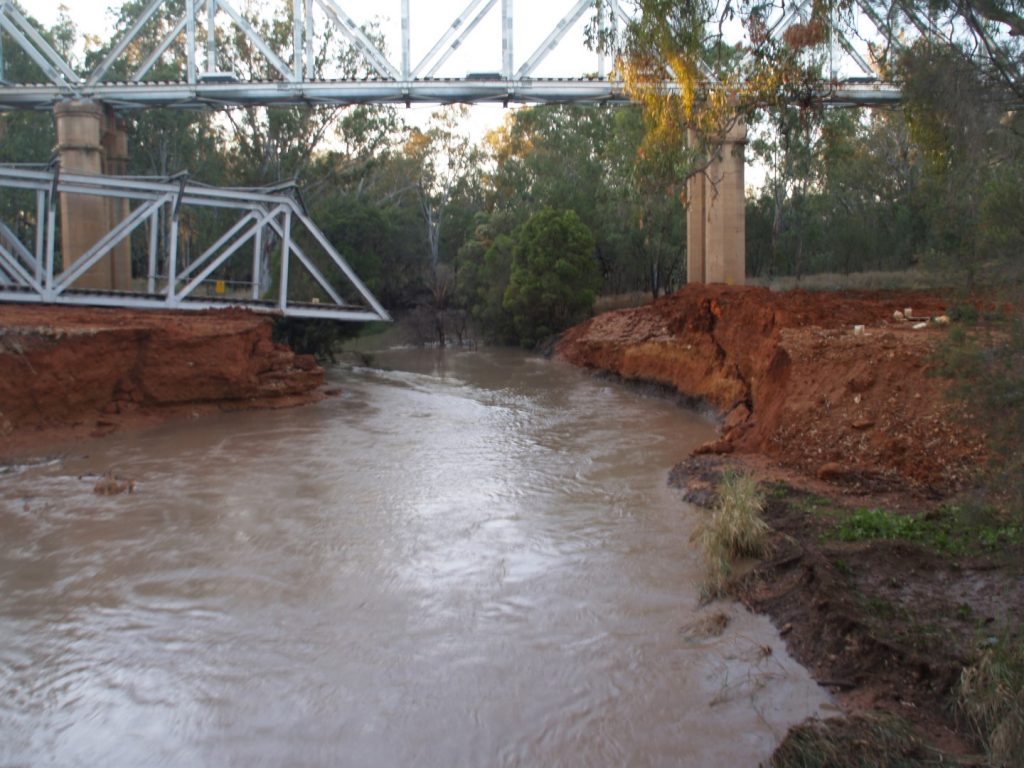
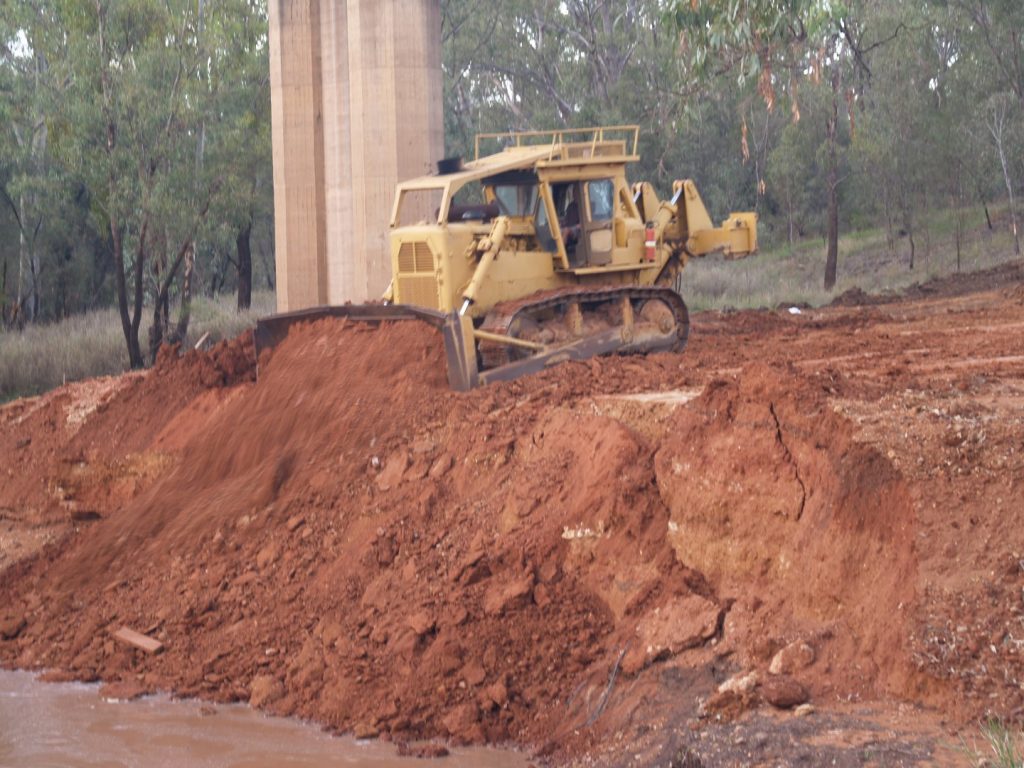
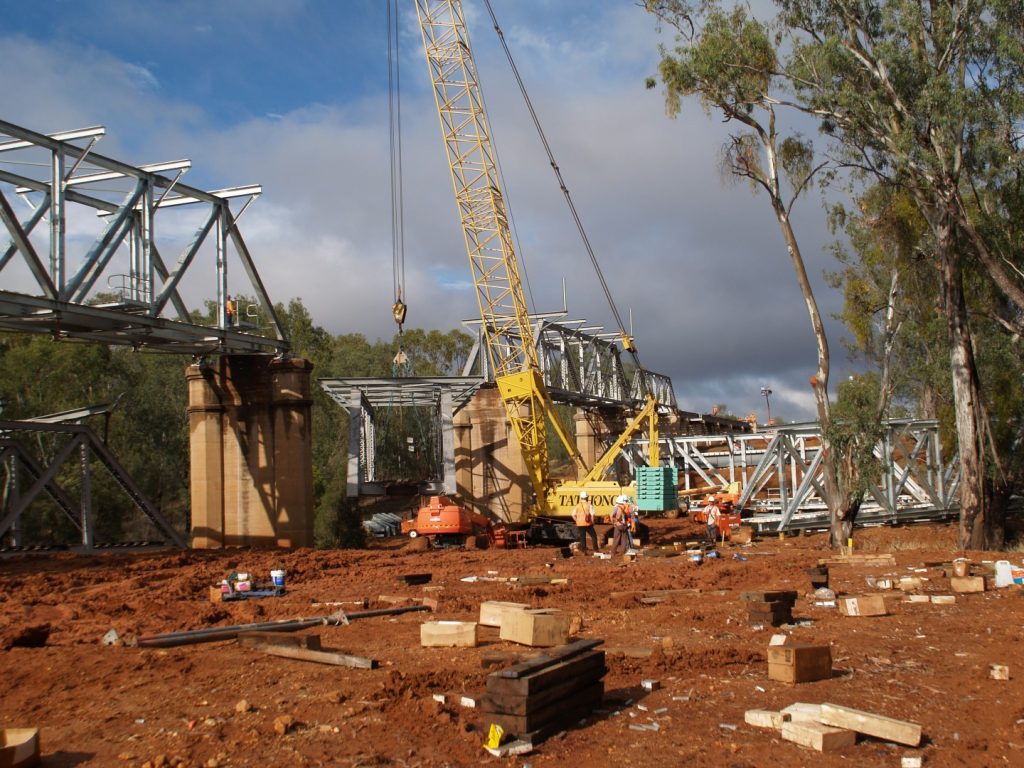
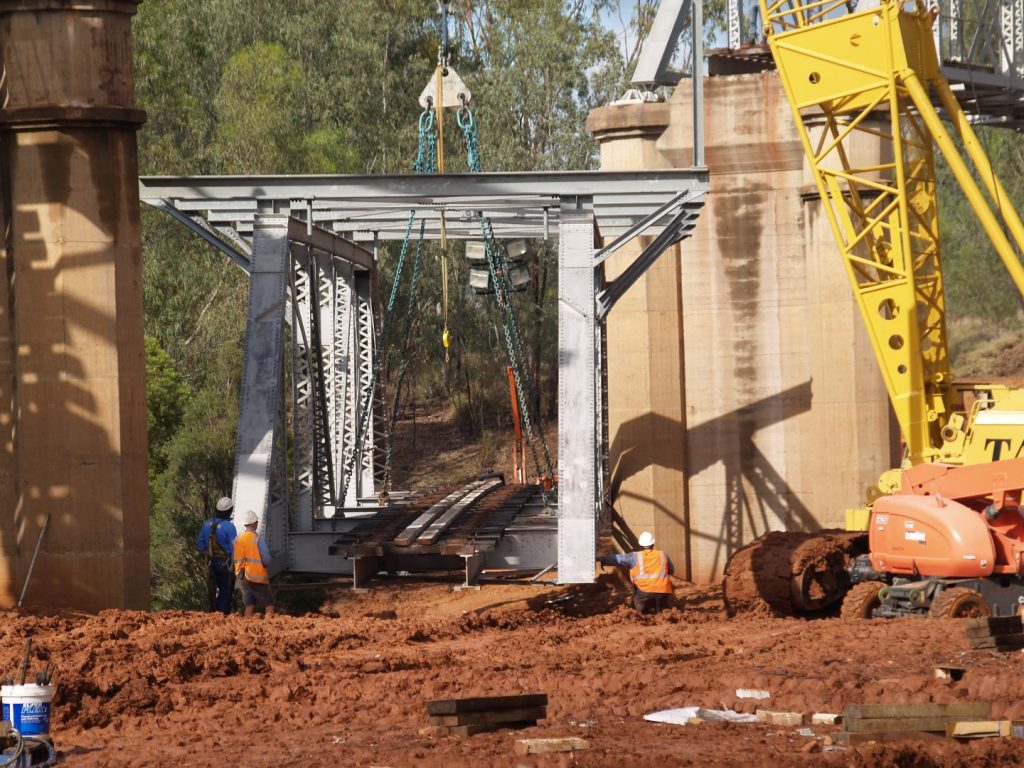
The bridge now has an axle load of 20 tonnes to cater to the 4000-class diesel electric engines and the coal wagons which have a capacity of eighty tonnes.
The job was completed with the construction area around the bridge tidied. All the excess soil was removed and later the area was planted to grass.
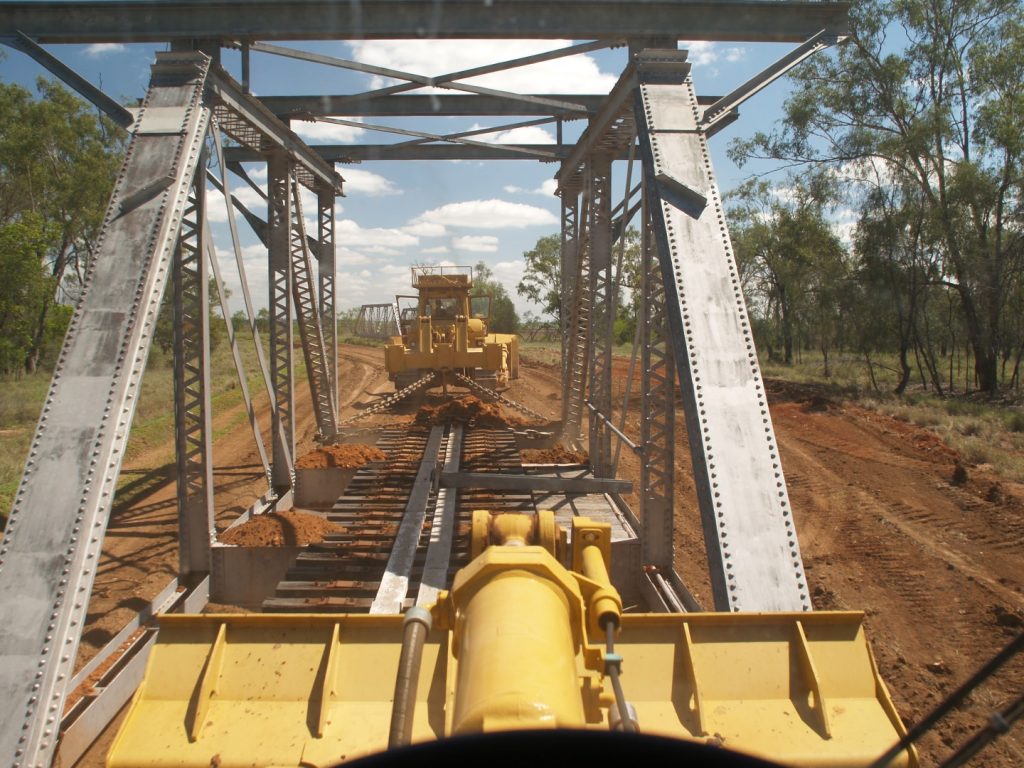
This massive upgrade was a joint venture between Canstruct and Queensland Rail and the new steel superstructure was manufactured by Casa Engineering. Mr Roy Watts of Mackay was the Building Inspector overseeing the construction of the new superstructure and the clean-up of the work site.
This steel bridge and the steel bridge over the Nogoa River at Emerald, are truly remarkable for their workmanship in a time, when everything was achieved through manual labour without the help of high-tech machinery.
Both bridges are now over a century old and bear testament to the men who constructed these magnificent structures. Perhaps these remarkable bridges will still carry trains into the next century.
– Compiled by Rosemary McLeod, 2020.
– Acknowledgements: A huge thank you to Greg Hallam from Queensland Rail who has worked with Rosemary McLeod and Robyn Morawitz for many years supporting and bringing together the history of the Comet Steel Rail Bridge.
– Photos: National Library of Australia; State Library of Queensland; Rosemary McLeod collection; Trevor Kemp collection; Queensland Rail / Greg Hallam; Audry Bywater.
– Video: Clementine Morawitz.
– Contact: cometales@gmail.com.au



